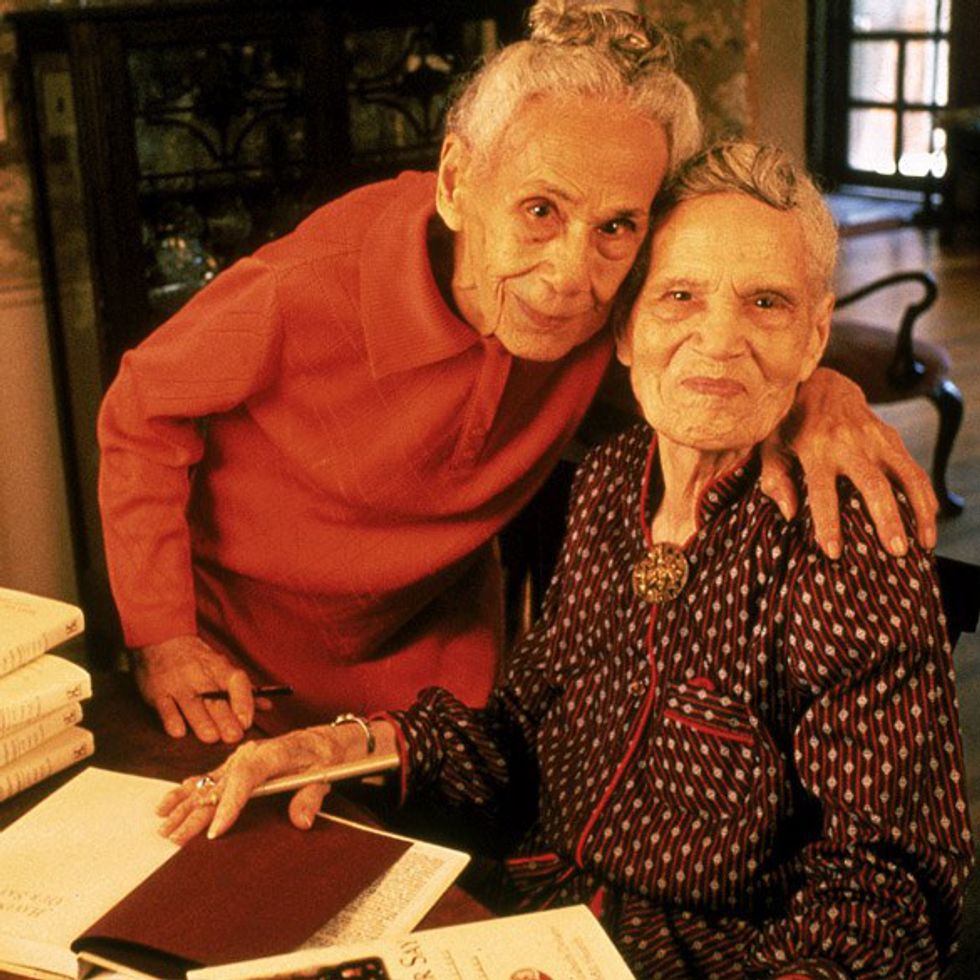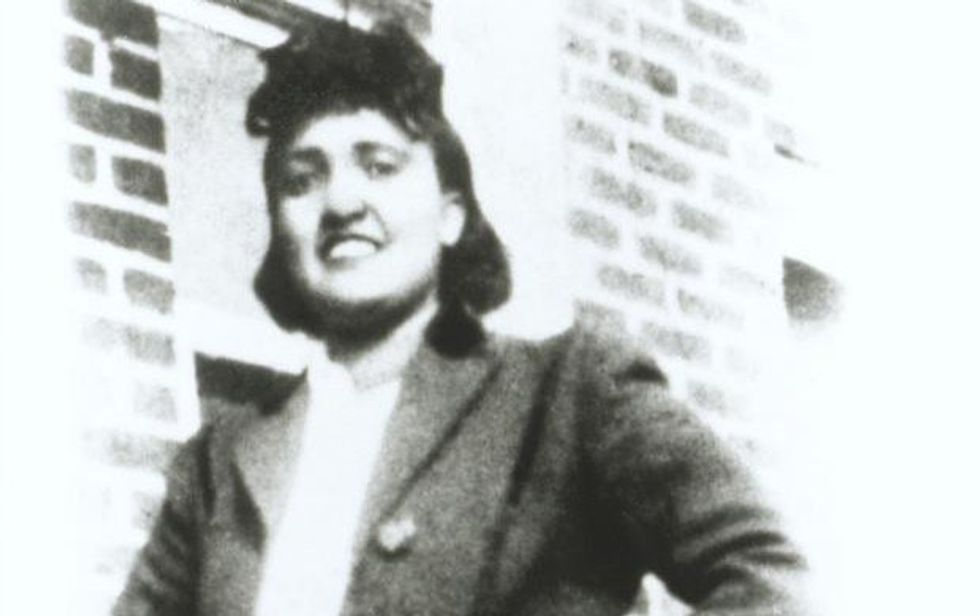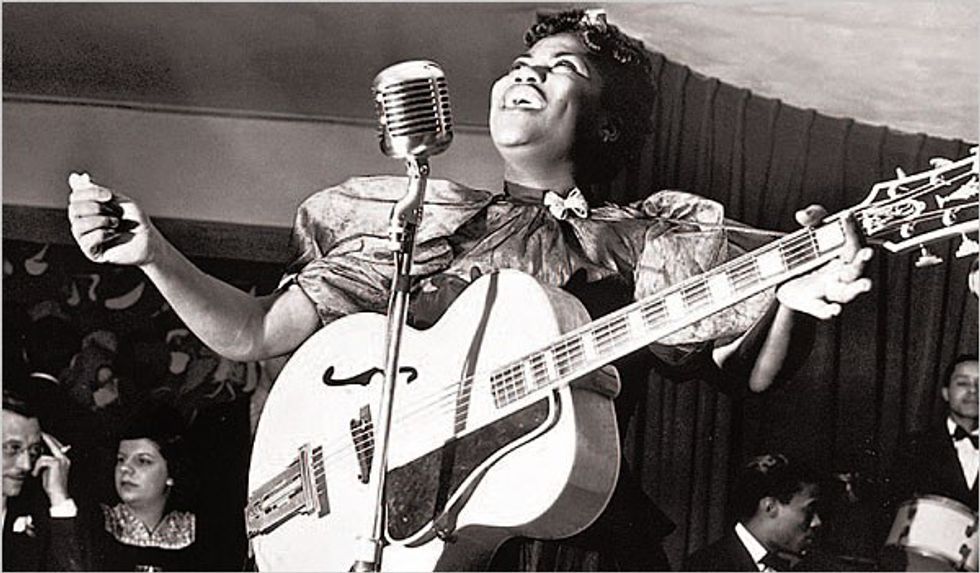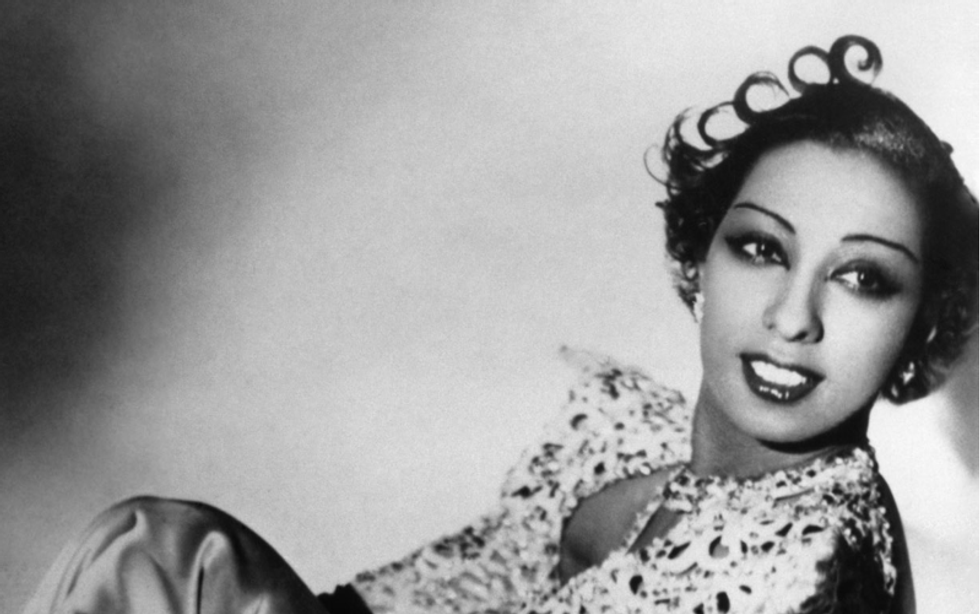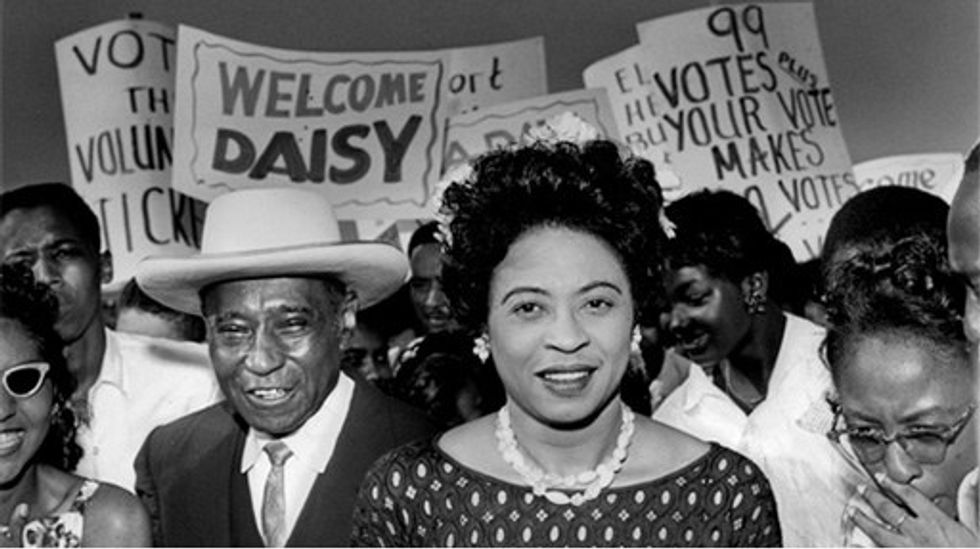As Women's History Month has come to a close, we have honored a number of women across the world. When thinking of black women who have changed history, however, you often only hear names such as Rosa Parks, Harriet Tubman, or even Madame CJ Walker.
Although their contributions are well acknowledged and appreciated, there are many others who have helped contribute to history in more ways than you think. Some names may seem familiar and some may not.
Either way, these women deserve to receive proper recognition. So, without any further ado, here are six black women who you should become familiar with.
1 & 2. Sadie (1889-1999) and Bessie Delany (1891-1995)
Pictured: Bessie standing left, Sadie right.
Sarah Louise "Sadie" and Annie Elizabeth "Bessie" Delany were the second and third of ten children to parents Henry Beard Delany, a free slave, and Nanny "Nan" Logan Delany. They were raised in Raleigh, North Carolina on the campus of St. Augustine's College (now known as St. Augustine's University) where their father became the first black Episcopal Bishop in the United States and their mother was a home economics and domestic science professor. From the Jim Crow laws of the late 19th century to the Civil Rights Movement in the 20th century, these ladies saw it all. In 1993, the sisters co-authored a book based on an interview with journalist Amy Hill Hearth titled: "Having Our Say: The Delany Sisters' First 100 Years." They tell their stories of the Jim Crow South, encounters with famous figures like Booker T. Washington, and life during the Harlem Renaissance. The two were also enrolled at Columbia University and earned degrees in Dentistry (Bessie) and Teaching (Sadie). In fact, Sadie Delany was the first African-American permitted to teach domestic science at the high school level in New York City. Bessie, on the other hand, was the lone African-American woman in her graduating Dentistry class. Despite the odds, she earned her doctorate and went on to be the second African-American woman to practice dentistry in the state of New York. Neither sister ever married, but their legacy lives on through their stories and encounters with people both young and old.
3. Henrietta Lacks (1920-1951)
Born Loretta Pleasant in Roanoke, Virginia, Henrietta Lacks' short but interesting life had a lasting impact in the progression of medical science. At the age of 4, she was sent to live with her grandfather following the death of her mother. At 14, she had her first child. Her second was born in 1939. In 1941, she married their father, Davis "Day" Lacks. Henrietta, who lived a simple life as a tobacco farmer, eventually moved to Maryland with her family and had three more children. In January of 1951, Lacks became seriously ill and sought to receive medical attention at Johns Hopkins Hospital, as it was the closest hospital to her home and the only hospital that would accept black patients. She was diagnosed with cervical cancer after a biopsy and began to receive treatment for her tumor. While receiving treatment, a surgeon extracted two samples of healthy and cancerous cervical tissue from her body and sent them in for medical research without Lacks' consent. At the time, it was common practice to not inform the patient of these procedures. Soon enough, the cancer spread and Lacks died on October 4, 1951. However, her death was not necessarily in vain, as her tissue samples were obtained by Dr. George Gey. Even though Lacks died, her cells remained alive for reasons that even today remain a mystery. The cells were stable enough to thrive and split, remaining immortal and renewing themselves on their own. Dr. Gey named these cells HeLa, the shortened version of Lacks' name. The HeLa cells were mass-produced and contributed to research studies for diseases including Leukemia, Parkinson's Disease, and Polio. After years of remaining unaware and not receiving any royalties for use, the National Institutes of Health granted the Lacks family control of how HeLa cell data would be distributed in 2013.
4. Sister Rosetta Tharpe (1915-1973)
Rosetta Nubin, better known as Sister Rosetta Tharpe, was born on March 20, 1915, in Cotton Plant, Arkansas. Her mother, Katie Bell Nubin, was a singer, mandolin player, and evangelist for the Church Of God in Christ (COGIC). Katie Nubin encouraged her daughter to express herself through music by allowing Tharpe to join her on stage at the tender age of 4. By age 6, Tharpe knew how to play guitar and traveled with her mother as a performer of an evangelical ensemble. As a duo, they performed both religious sermons and gospel concerts all over the deep south. Finally, they relocated to Chicago to join the Roberts Temple Church of God In Christ. It was there that Tharpe stood out in an era where black female guitarists were widely unheard of. At 19, Sister Rosetta Tharpe married Thomas Thorpe, a COGIC preacher who also joined her and her mother on various tours. The marriage didn't last, but Tharpe chose to keep her married name and altered the spelling for both professional and personal use. In 1938, she was signed to Decca Records where she had immediate success. The song "Rock Me" was a smash hit with Tharpe on guitar and the accompaniment of Lucius "Lucky" Millinder's jazz orchestra. She became so popular that she was the only one of two black gospel artists who recorded "V-Discs" for United States soldiers overseas during World War II. In 1947, Tharpe released the songs "Didn't It Rain" and "Up Above My Head" where she returned to her strong religious roots, but kept her success. As the years went on, Tharpe had an unsuccessful bid in blues music, which caused her popularity to decline. This resulted in getting cut from Decca Records. She did, however, strike a deal with Mercury Records and went on a European tour in 1957. She toured throughout the 1960s until a stroke in 1970 caused her to have a leg amputation and speech difficulties. Despite it all, Tharpe still continued to perform until her death on October 9, 1973 at age 58. Very little footage of Tharpe's performances remain, but she paved the way for artists such as Chuck Berry, Jimi Hendrix, and Elvis Presley. It even earned her the posthumous name of "Godmother of Rock 'n' Roll."
5. Josephine Baker (1906-1975)
Josephine Baker was born on June 3, 1906, as Freda Josephine McDonald in St. Louis, Missouri. Her father abandoned her shortly after her birth and her mother later remarried. Josephine made her living babysitting and cleaning houses for wealthy white families, dropping out of school at age 10. By 15 she had married twice, this time to Willie Baker, and she kept her married name despite having divorced shortly after. Barely surviving the East St. Louis Riots of 1917, she ran away from home and joined a Vaudeville dancing troupe, eventually performing on Broadway.
In 1925, Josephine left for Paris where she took the city by storm. It was there that she experienced a massive turning point in her career, as she captured Parisian hearts with success in La Revue Negre and again with dance partner Joe Alex in "Danse Sauvage." Baker boldly performed in nothing but a feather skirt on stage, causing an audience frenzy with her exotic and sensual dance moves. This created an overnight success.
When La Rue Negre closed production, Baker had continued success in La Folie du Jour. Her famous jaw-dropping performance where she wore a skirt of 16 bananas permanently sealed her star status. When she wasn't captivating the stage, Baker owned several animals which included a leopard, a pig, a snake, a chimpanzee, a goat, a parrot, parakeets, cats, and dogs.
In 1936, Baker returned to the United States to star in the widely-popular Ziegfield Follies. That, however, proved to be disastrous as the idea of a black woman with such elegance and power did not sit well with the American audience. During World War II, Baker performed for troops and did undercover work for the French Resistance. This included smuggling secrets on sheet music. She was later awarded the Croix de Guerre and the Legion of Honor with the Rosette of the Résistance.
After the war, Baker had adopted over 12 children, nicknaming them "The Rainbow Tribe" as they were all different ethnicities. By the 1950s and '60s, she began to advocate for civil rights in the United States. She became enveloped in an all-out media war against pro-segregation columnist Walter Winchell after the popular Stork Club refused to serve her. This only drove her to refuse to perform at any club or theaters that were not already integrated, which, in itself, broke many color barriers. By the end of the 1960s, Baker was forced to sell her estate after accumulating serious debt. In 1973, she made her comeback by performing at New York's Carnegie Hall where she received a standing ovation in the United States for the first time in almost 50 years.
On April 8, 1975, she performed what would be her last concert in Paris' Bobino Theater, where she did a medley of routines from her 50-year career. About four days later she slipped into a coma and died at the age of 68, becoming the first American to be buried with French military honors.
6. Daisy Bates (1914-1999)
Daisy Lee Gatson Bates was a journalist, publisher, and civil rights activist who played a key role in the integration of public schools in Little Rock, Arkansas. Her official date of birth is unknown, but the day that is most acknowledged is November 11, 1914.
At a young age, she was told that her mother was murdered by several white men from her hometown and that her father fled to avoid being murdered himself. This left the young Bates in the care of family friends Susie and Orlie Smith. Growing up, Bates experienced racism firsthand as the schoolhouse that she attended was segregated and in very poor condition. At the age of 15, she met her future husband Lucius Christopher (L.C.) Bates who, at the time, was a traveling salesman and journalist. A romance ensued over the next decade and the couple got married in 1942.
Daisy Bates got her first taste of activism in 1946 when an article that she wrote for the Arkansas State Press (a paper that she and her husband founded in 1941) challenged the influence of white supremacy. She had accused a local judge of unfairly sentencing three black mill workers. In response, the judge issued arrest warrants for both her and her husband citing charges for contempt of court and gave them ten days in jail. The Bates' appealed in Arkansas State Court and the decision was reversed. After the court decision of Brown v. Board of Education in 1954, Bates strived to enforce the Supreme Court ruling of integration, which was widely rejected in the south. As president of the Arkansas Conference of the National Association for the Advancement of Colored People (NAACP), she and several others attempted to integrate Little Rock Central High School by choosing nine black students.
Today they are known as the "Little Rock Nine" as they were the very first black students to attend the school in the fall of 1957. As the school year was set to begin, they were greeted with angry white citizens lining the sides of the school entrance. Posters, jeers, and racist remarks of protest were some of the many things that the students endured. The day before classes were supposed to begin, Arkansas governor Orval Faubus called in the National Guard with strict instructions to deny the students entry. Despite that, Bates and the students still tried to enter the building only to be turned away.
It wasn't until President Dwight Eisenhower federalized the Arkansas National Guard that the students were able to enter the high school permanently and safely. Following the Little Rock Nine, Bates became the subject to harassment by local citizens and the legal system. Due to this, advertisers pulled from the Arkansas State Press, forcing it to close in 1959. In 1960 she moved to New York and wrote her memoir, "The Long Shadow of Little Rock," which became the first book to win the American Book Award. Bates ended up returning to Little Rock following a stroke in 1965.
In the years that followed, she worked with black families in poverty to help get them to a better economic status. She also received an honorary law doctorate from the University of Arkansas in the 1980s and even had the opportunity to pass the Olympic torch during the 1996 Olympics held in Atlanta, Georgia. Bates succumbed to a heart attack on November 4, 1999, in Little Rock, Arkansas.
Despite everything that was thrown at these women, they have all earned themselves a place in American History. In some way, shape, or form, these women helped to bring change and I thank them greatly for that. I hope that you learned something today!




